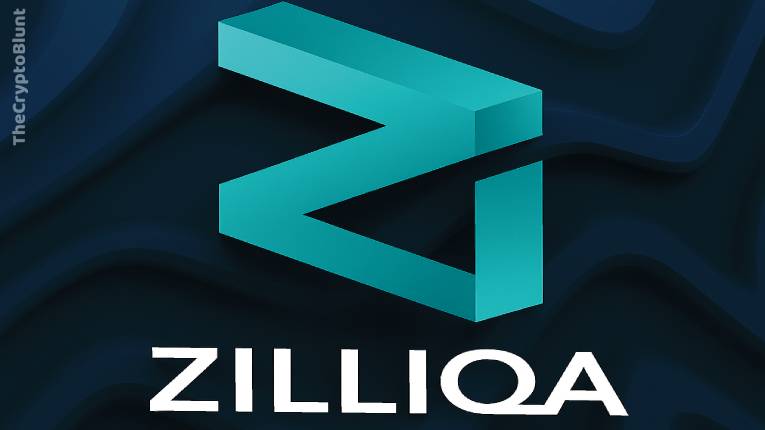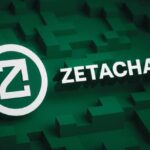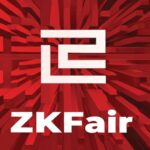This is precisely the problem that Zilliqa was designed to solve. Launched in 2017 by a team of academics and computer scientists from the National University of Singapore, Zilliqa pioneered a groundbreaking scaling solution called sharding. Their vision was to create a high-throughput, secure, and developer-friendly blockchain platform capable of supporting a vast array of decentralized applications (dApps), from gaming and metaverse experiences to decentralized finance (DeFi) and real-world asset tokenization.
This comprehensive article is tailored for absolute beginners, aiming to demystify the core concepts of cryptocurrency, blockchain, and decentralization. We’ll delve deep into Zilliqa’s innovative sharding technology, explain how its ecosystem functions, and explore the crucial role of its native cryptocurrency, ZIL. We’ll also address common misconceptions about crypto, provide a beginner-friendly perspective on how to acquire and store ZIL, and highlight Zilliqa’s real-world applications and its ongoing evolution, particularly with the recent launch of Zilliqa 2.0.
The Digital Foundation: Core Concepts for Understanding Zilliqa
Before we dive into Zilliqa’s unique approach, let’s establish a clear understanding of the foundational technologies and principles that underpin all cryptocurrencies. These concepts are crucial for grasping how Zilliqa aims to deliver a scalable and secure blockchain experience.
1. Cryptocurrency: Digital Money, Secured by Code
A cryptocurrency is a form of digital or virtual money that uses cryptography (advanced mathematical coding) for security. This makes it incredibly difficult to counterfeit or double-spend, ensuring the integrity of financial transactions. Unlike traditional government-issued money (fiat currency), which is controlled by central banks, cryptocurrencies operate on decentralized networks. This means no single entity has complete control over its supply, value, or transactional flow, making them resistant to censorship.
ZIL: The Fuel of the Zilliqa Network
ZIL is the native utility token of the Zilliqa blockchain. It serves as the primary medium for value exchange and utility within the Zilliqa ecosystem. Think of it as the fuel that powers all interactions on the Zilliqa platform, enabling users to:
- Pay for Transactions: All transactions and smart contract executions on the Zilliqa network require ZIL as a “gas” fee. These fees are typically very low, making Zilliqa suitable for microtransactions.
- Staking and Network Security: ZIL holders can stake their tokens to support the network’s security and consensus mechanism, earning rewards in return.
- Governance: ZIL holders participate in the governance of the Zilliqa platform, voting on important proposals and upgrades to the protocol.
- Issuance of New Tokens and NFTs: Developers building on Zilliqa can use ZIL to facilitate the creation and management of their own tokens and Non-Fungible Tokens (NFTs).
2. Blockchain: A Distributed, Immutable Ledger
At its core, a blockchain is a revolutionary way to record information. Imagine a digital ledger – like a massive, constantly growing spreadsheet – that records every single transaction or piece of data. Now, envision this ledger not being stored in one central location, but rather copied and maintained by thousands of independent computers (nodes) around the world.
- Blocks of Transactions: Information (like transactions, smart contract executions, or data entries) is grouped together into “blocks.”
- Chained Together: Each new block is cryptographically linked to the previous one, forming an unbreakable “chain” of blocks.
- Decentralized & Distributed: Copies of the entire blockchain are distributed across a global network of participants. This distributed nature ensures its resilience and eliminates a single point of failure.
- Immutable: Once a transaction or piece of data is recorded in a block and added to the chain, it is cryptographically secured and virtually impossible to alter or remove. This creates a secure, transparent, and tamper-proof history.
Consider adding an infographic here: “Basic Blockchain Mechanics.” Visually represent blocks chaining, distributed copies, and how data is added and secured.
3. Decentralization: Power to the Network
Decentralization is the defining characteristic of blockchain technology. It’s the principle of distributing control and decision-making away from a single, central authority (like a company, bank, or government) to a network of many independent participants.
In the context of Zilliqa:
- No Single Point of Control: Zilliqa, as a public blockchain, is designed to operate without a central authority. Decisions and operations are managed by consensus among network participants (validators and ZIL holders).
- Enhanced Security and Resilience: The distributed nature makes the network highly resistant to attacks or failures, as there’s no single target for malicious actors.
- Transparency and Trust: The decentralized nature of Zilliqa’s blockchain provides a transparent and auditable record of activities, fostering trust among participants.
4. Consensus Mechanism: Hybrid Approach (PoW for Identity, pBFT for Consensus)
Zilliqa employs a unique hybrid consensus mechanism to achieve high throughput and security:
- Proof-of-Work (PoW) for Identity: Unlike Bitcoin, Zilliqa uses PoW only for a very specific purpose: to establish the identity of nodes joining the network and to assign them to “shards” (more on sharding below). This prevents Sybil attacks (where a single entity creates many fake identities to disrupt the network) without the continuous, high energy consumption associated with traditional PoW mining for every transaction. Miners on Zilliqa perform PoW for only a short period (around 5 minutes every 1.5 hours) to prove their identity.
- Practical Byzantine Fault Tolerance (pBFT) for Consensus: Once nodes are assigned to their respective shards, they use a highly efficient consensus algorithm called Practical Byzantine Fault Tolerance (pBFT).
- Agreement within Shards: Within each shard, nodes must agree on the validity of transactions and the order of blocks. pBFT allows nodes to reach quick consensus even if some nodes are malicious or faulty, as long as a supermajority of honest nodes are present.
- High Throughput: Because pBFT operates efficiently within smaller groups (shards), it allows Zilliqa to process transactions in parallel, leading to significantly higher transaction throughput compared to single-chain blockchains using slower consensus mechanisms.
This hybrid approach leverages the best of both worlds: PoW for initial network security and identity, and pBFT for fast, scalable transaction finality within shards.
Consider adding an infographic here: “Zilliqa’s Hybrid Consensus.” Visually show two distinct phases: 1) PoW for node joining/identity, then 2) pBFT for transaction validation within smaller groups (shards).
Zilliqa’s Core Innovation: Sharding for Scalability
The defining feature of the Zilliqa blockchain, and its answer to the scalability challenge, is sharding. When I first heard about sharding, it immediately made sense – it’s like turning that single-lane road into a multi-lane highway.
1. What is Sharding?
Sharding is a technique borrowed from traditional database scaling, adapted for blockchain. It involves dividing a blockchain network into smaller, independent segments called “shards.” Each shard is capable of processing a subset of transactions and smart contracts in parallel.
- Network Sharding: Zilliqa divides its network of nodes into smaller groups, with each group forming a “shard.”
- Transaction Sharding: Incoming transactions are then assigned to different shards based on factors like the sender’s address.
- Parallel Processing: Instead of every node on the entire network processing every transaction (which is how many older blockchains work), nodes within each shard only need to process the transactions assigned to their specific shard. This allows multiple transactions to be processed simultaneously across different shards.
- Increased Throughput: As the network grows and more nodes join, more shards can be created. This means the overall transaction capacity (throughput) of the Zilliqa network increases proportionally with the number of nodes, making it highly scalable. This is why Zilliqa has been able to boast thousands of transactions per second (TPS), significantly higher than many un-sharded blockchains.
2. How Zilliqa’s Sharding Works:
- Directory Service (DS) Committee: A special committee of nodes (the Directory Service or DS committee) is responsible for coordinating the network. They use PoW to establish node identities and then group nodes into different shards.
- Shard Formation: Once the DS Committee forms the shards, each shard operates semi-independently.
- Intra-Shard Consensus: Within each shard, nodes use the pBFT consensus algorithm to validate transactions and agree on the ordering of new “microblocks” (blocks specific to that shard).
- Inter-Shard Communication (Merging Microblocks): After shards process their transactions and create microblocks, these microblocks are merged by the DS Committee into a “transaction block” that is then added to the main Zilliqa blockchain. This ensures the integrity and global state of the entire network.
This elegant design allows Zilliqa to achieve high throughput without sacrificing security or decentralization.
Consider adding an infographic here: “Zilliqa Sharding Explained.” Visually depict the entire network, then show it splitting into multiple “shards,” each processing transactions in parallel, finally merging back into the main chain.
3. Scilla: Zilliqa’s Secure Smart Contract Language
Beyond sharding, Zilliqa also developed its own smart contract language called Scilla (Smart Contract Intermediate-Level Language). This was a deliberate choice to enhance security.
- Formal Verification: Scilla is designed to be “safe-by-design.” It allows for formal verification, meaning developers can mathematically prove that their smart contracts will behave as intended and are free from common vulnerabilities that have plagued other blockchains (like re-entrancy attacks).
- Clear Semantics: Scilla emphasizes clear and explicit semantics, making it easier for developers to write correct code and for auditors to review it.
- Focus on Financial Applications: The language was particularly designed with financial applications in mind, where security and precision are paramount.
While having a custom language initially meant a steeper learning curve for developers accustomed to Solidity (Ethereum’s language), the security benefits were a major draw for specific use cases. With Zilliqa 2.0, the platform is also moving towards broader compatibility.
The Zilliqa Ecosystem: Building a High-Performance Web3 Future
Zilliqa’s focus on scalability and security has attracted a diverse range of developers and projects, leading to a vibrant ecosystem across various sectors.
1. Key Components and Pillars of the Ecosystem:
- Zilliqa Blockchain (Zilliqa 1.0 & 2.0): The foundational Layer 1 network that provides the high-throughput, sharded infrastructure.
- ZIL Token: The native utility and governance token powering all transactions and interactions.
- dApp Developers: A growing community of developers building decentralized applications on Zilliqa, leveraging its speed, low fees, and secure smart contract language.
- Validators and Stakers: Critical participants who secure the network by running nodes and staking ZIL, contributing to decentralization and earning rewards.
- Users: Individuals and businesses interacting with Zilliqa’s dApps, performing transactions, and leveraging its features.
- Ecosystem Projects: A wide array of projects spanning various categories:
- Gaming & Metaverse (e.g., Metapolis, Web3War, VALIANT): Zilliqa has made significant strides in the gaming and metaverse sector, offering high transaction speeds and low latency crucial for immersive gaming experiences. Metapolis was an ambitious metaverse-as-a-service platform, while Web3War is a first-person shooter game.
- Decentralized Finance (DeFi) (e.g., ZilSwap, PolyNetwork): Zilliqa supports various DeFi protocols, including decentralized exchanges (DEXs), lending platforms, and stablecoins (like XSGD, a Singapore Dollar-backed stablecoin).
- NFTs & Creator Economy: Zilliqa supports the creation and trading of NFTs, with platforms and marketplaces emerging on the chain.
- Web3 Infrastructure & Tools: Wallets (e.g., ZilPay, Moonlet), block explorers, and developer SDKs that make it easier to build and interact with the Zilliqa network.
- Real-World Asset (RWA) Tokenization: With Zilliqa 2.0’s focus on institutional readiness and compliance-driven DeFi, RWA tokenization is a key area of focus.
- Digital Identity: Projects focused on decentralized identity solutions leverage Zilliqa’s secure and scalable infrastructure.
2. Real-World Applications and Benefits:
Zilliqa’s design aims to solve fundamental problems in the blockchain space and enable real-world adoption:
- High Throughput & Low Fees: This is Zilliqa’s main selling point. Its ability to process thousands of transactions per second with minimal fees makes it ideal for:
- Microtransactions: Enabling new business models that rely on very small, frequent payments (e.g., pay-per-article, gaming item purchases).
- Large-Scale dApps: Supporting applications with a high volume of user interactions, like popular games or social media platforms.
- Payment Solutions: Facilitating fast and cost-effective international payments.
- Enhanced Security for Smart Contracts: The use of Scilla, with its focus on formal verification, significantly reduces the risk of smart contract bugs and hacks, which have plagued other ecosystems. This fosters greater trust in dApps built on Zilliqa, especially for financial applications.
- Scalable Gaming & Metaverse: Zilliqa’s performance characteristics are particularly well-suited for gaming, where low latency and high transaction speeds are crucial for a smooth user experience. This has positioned Zilliqa as a strong contender in the Web3 gaming space.
- Enterprise Adoption: Its focus on scalability, security, and a robust architecture makes Zilliqa attractive for enterprises looking to leverage blockchain for various use cases, including supply chain management, data verification, and digital advertising.
- Sustainable Blockchain: Zilliqa’s hybrid consensus mechanism, requiring minimal PoW, makes it a more energy-efficient blockchain compared to traditional PoW networks, appealing to environmentally conscious users and businesses.
3. Zilliqa 2.0: The Next Evolution (As of July 2025)
As of July 2025, Zilliqa has recently launched its highly anticipated Zilliqa 2.0 mainnet. This is a significant protocol upgrade designed to evolve the platform to meet the demands of the current blockchain landscape and beyond.
Key features and implications of Zilliqa 2.0:
- EVM Compatibility: A major leap forward! Zilliqa 2.0 introduces full Ethereum Virtual Machine (EVM) compatibility. This means developers can now easily deploy Ethereum-native applications and tools directly onto Zilliqa, greatly expanding its developer base and interoperability with the broader EVM ecosystem. This addresses the initial barrier of needing to learn Scilla for all development.
- Modern Proof-of-Stake Consensus: Zilliqa 2.0 transitions to a more modern PoS consensus model, further enhancing efficiency and decentralization.
- Customizable x-Shards: The sharding architecture is being made even more flexible with “customizable x-shards,” allowing for greater optimization for specific application needs.
- Seamless Cross-Chain Communication: Enhanced capabilities for dApps and assets to move and interact effortlessly between Zilliqa and other blockchains.
- Light Client Support: Enabling more lightweight and accessible ways for users and dApps to interact with the Zilliqa chain without running full nodes.
- Sustainable Tokenomics: Further refinements to the economic model to ensure long-term sustainability and incentivize network participants.
- Focus on Institution-Ready Infrastructure: Zilliqa 2.0 is built with a strong emphasis on regulatory-ready infrastructure, making it suitable for tokenized real-world assets (RWAs) and compliance-driven DeFi. This positions Zilliqa as a strong candidate for institutional adoption.
- Smart Accounts and ZK Features: Future roadmap includes advanced features like smart accounts (for enhanced on-chain programmability) and Zero-Knowledge (ZK) features for privacy-preserving compliance tools (e.g., selective disclosure, verifiable credentials).
Zilliqa 2.0 represents a complete architectural overhaul, aiming to make Zilliqa faster, greener, easier to build on, and ready for real-world adoption at scale, addressing critical needs for enterprises and developers alike.
Debunking Common Crypto Myths: Clarifying for Zilliqa and Beyond
The world of blockchain and cryptocurrencies is often misunderstood, with various myths circulating that can deter newcomers. As someone who’s personally navigated the initial confusion, I know how crucial it is to address these misconceptions directly. These apply broadly across the crypto space, including Zilliqa’s ecosystem.
- “Cryptocurrency is only for criminals.”
- Reality: This is a persistent and often sensationalized myth. While cryptocurrencies, like any form of value exchange (cash, gold, traditional banking systems), can be used for illicit activities, the vast majority of cryptocurrency transactions are legitimate.
- Transparency and Traceability: Most public blockchains, including Zilliqa’s transparent ledger, record every transaction permanently and immutably. This means that while pseudonymous (using addresses instead of names), transactions are traceable. Law enforcement agencies have become increasingly sophisticated in tracing illicit funds on blockchains.
- Innovation and Legitimate Use: Cryptocurrencies are driving innovation in finance, technology, and various industries. Zilliqa, for instance, focuses on enabling scalable and secure applications for gaming, DeFi, and enterprise solutions – all legitimate and rapidly growing sectors.
- Our Trustworthiness Principle: We believe in providing a balanced view. The singular focus on illicit activity ignores the immense potential and legitimate applications of blockchain technology, from streamlining international payments to enabling new forms of digital ownership and interaction in gaming and the metaverse (areas where Zilliqa excels).
- Reality: This is a persistent and often sensationalized myth. While cryptocurrencies, like any form of value exchange (cash, gold, traditional banking systems), can be used for illicit activities, the vast majority of cryptocurrency transactions are legitimate.
- “Cryptocurrency is a scam or Ponzi scheme.”
- Reality: While there have been, and continue to be, many scams within the crypto space (just as there are scams in traditional finance), cryptocurrency itself is a technology, not inherently a scam.
- Technology, Not a Scheme: Blockchain is a revolutionary technology. Zilliqa, like other established cryptocurrencies, is an open-source project with transparent code, active development, and a clear vision for providing utility (scalability, security). It’s not a Ponzi scheme, which relies on new investors paying off old investors with no underlying product or service.
- Due Diligence is Key: The crypto market is still relatively unregulated in many areas, making it susceptible to fraudulent projects. It’s crucial to distinguish between legitimate technological innovations (like Zilliqa’s sharding) and fraudulent schemes designed to enrich early participants at the expense of later ones.
- Our Experience Principle: When I first encountered crypto, the sheer number of projects and rapid price swings could make it feel like a chaotic environment. However, with careful research and understanding, you learn to differentiate between genuine technological endeavors and speculative hype or outright fraud. Trustworthy projects like Zilliqa will have clear whitepapers, active development, and a focus on solving real-world problems.
- Reality: While there have been, and continue to be, many scams within the crypto space (just as there are scams in traditional finance), cryptocurrency itself is a technology, not inherently a scam.
- “Cryptocurrency is bad for the environment.”
- Reality: This myth primarily stems from the energy consumption of Proof-of-Work (PoW) mining, predominantly associated with Bitcoin and early Ethereum. However, it’s an oversimplification and doesn’t apply to all cryptocurrencies.
- Efficient Consensus Mechanisms: Zilliqa, with its hybrid consensus, uses PoW only for identity and then switches to the highly efficient pBFT for transaction processing within shards. Furthermore, Zilliqa 2.0 has moved to a more modern Proof-of-Stake (PoS) consensus model. PoS is significantly more energy-efficient as it does not require intense computational competition.
- Net Environmental Impact: The environmental impact of traditional financial systems (banks, data centers, ATMs, secure transportation of cash) is also significant but often overlooked. As blockchain technology evolves, its energy footprint is becoming a smaller, more optimized part of the broader digital economy.
- Our Expertise Principle: It’s important to understand the nuances of different consensus mechanisms. Zilliqa’s design has always prioritized energy efficiency compared to pure PoW chains, making it a “greener” blockchain option.
- Reality: This myth primarily stems from the energy consumption of Proof-of-Work (PoW) mining, predominantly associated with Bitcoin and early Ethereum. However, it’s an oversimplification and doesn’t apply to all cryptocurrencies.
- “Cryptocurrency will replace all money.”
- Reality: While cryptocurrencies offer significant advantages in certain areas, it’s highly unlikely they will completely replace traditional fiat currencies in the foreseeable future.
- Complementary, Not Replacement: Cryptocurrencies are more likely to exist alongside, and complement, traditional money. They offer alternative systems for payments, investments, and digital asset management, solving problems that traditional systems struggle with (e.g., faster international payments, provable digital ownership, new forms of digital entertainment).
- Governmental Control: Governments are unlikely to cede complete control over monetary policy, which is essential for managing national economies. Instead, we are seeing the rise of Central Bank Digital Currencies (CBDCs), which are digital versions of fiat currency issued and controlled by central banks.
- Zilliqa’s Context: Zilliqa’s goal is not to replace national currencies, but to provide a scalable and secure platform for specific applications, enabling new digital economies (like those in gaming and the metaverse) and enhancing existing financial systems with decentralized solutions.
- Our Authoritativeness Principle: Experts generally agree that a hybrid financial future is more probable, where traditional finance and decentralized blockchain systems coexist and interoperate.
- Reality: While cryptocurrencies offer significant advantages in certain areas, it’s highly unlikely they will completely replace traditional fiat currencies in the foreseeable future.
Your First Steps: Exploring the Zilliqa Ecosystem
If Zilliqa’s innovative approach to scalability, its focus on gaming and enterprise, and its recent Zilliqa 2.0 upgrade have piqued your interest, and you’re curious about acquiring its native token, ZIL, here’s a beginner’s guide. Remember, the cryptocurrency market is volatile and speculative. This information is for educational purposes only and should not be considered financial advice. Always conduct your own thorough research (DYOR) and understand the inherent risks.
1. Acquiring ZIL: Your Gateway to the Zilliqa Network
ZIL is the native cryptocurrency of the Zilliqa blockchain. Here’s how beginners can typically acquire it:
- Centralized Exchanges (CEXs) – Recommended for Beginners: This is usually the easiest and most common way to buy ZIL.
- Choose a Reputable Exchange: Select a well-established exchange that lists ZIL. Globally, major exchanges like Binance, KuCoin, Gate.io, and Kraken often list ZIL. In India, you can find ZIL listed on major domestic platforms like WazirX, CoinDCX, and CoinSwitch Kuber, or international exchanges that cater to Indian users (e.g., Binance). Always check the specific exchange’s supported cryptocurrencies before signing up.
- Sign Up & Complete KYC: Create an account and complete the mandatory Know Your Customer (KYC) verification. This involves providing identity documents (like Aadhar, PAN) and sometimes proof of address, as per Indian and international Anti-Money Laundering (AML) regulations.
- Deposit Funds: Deposit Indian Rupees (INR) via supported methods like UPI, IMPS, or bank transfer, or deposit another commonly traded cryptocurrency (like USDT or BTC) into your exchange account.
- Buy ZIL: Navigate to the trading section, find the ZIL trading pair (e.g., ZIL/INR, ZIL/USDT), and place a buy order. For simplicity, new users often use “market orders” to buy at the current price, or “limit orders” to buy at a specific target price.
- Decentralized Exchanges (DEXs): ZIL can also be traded on decentralized exchanges that support the Zilliqa network (e.g., ZilSwap) or cross-chain swaps. This method is generally more advanced and might require an understanding of Web3 wallets and liquidity pools.
2. Storing Your ZIL: Securing Your Digital Assets
Once you acquire ZIL, it’s paramount to move it off the exchange into a secure, non-custodial wallet where you control your private keys. Leaving significant amounts of ZIL on an exchange carries risks (e.g., exchange hacks, insolvency, or regulatory freezes).
- Zilliqa Native Wallets:
- ZilPay: This is a popular browser extension wallet specifically designed for the Zilliqa network, similar to MetaMask for Ethereum. It allows you to store ZIL and interact with dApps built on Zilliqa.
- Moonlet Wallet: A multi-currency wallet that offers strong support for ZIL, including staking capabilities.
- Official Zilliqa Wallet (Zillet.io): A web-based wallet that provides a secure interface for managing your ZIL.
- Multi-Currency Wallets: Many popular multi-currency software wallets (like Trust Wallet, Exodus) and hardware wallets (like Ledger, Trezor) support ZIL. Always verify official support on the wallet provider’s website.
- Hardware Wallets (Cold Storage) – Highest Security: For significant amounts of ZIL, a hardware wallet provides the highest level of security by storing your private keys offline.
- Always verify that your specific hardware wallet model and its firmware support ZIL on the Zilliqa network.
- The Golden Rule: Back up your secret recovery phrase (seed phrase)! This sequence of 12 or 24 words is the master key to your wallet. Write it down physically on paper, store multiple copies in secure, private, and separate locations (e.g., a fireproof safe, a locked drawer). Never store it digitally (e.g., on your phone, in email, cloud storage, or screenshots). Never share it with anyone, especially not in response to unsolicited messages or emails. Losing this phrase means losing access to your funds forever.
3. Using Your ZIL: Embracing the Zilliqa Ecosystem
Once your ZIL is securely stored, you can begin to explore the Zilliqa ecosystem’s features:
- Participate in Staking: Delegate your ZIL to network validators to contribute to network security and earn staking rewards. This is a common way to earn passive income with your ZIL.
- Explore dApps: Discover and interact with the growing number of decentralized applications built on Zilliqa, including:
- Games and Metaverse: Dive into Web3 games like Web3War or explore metaverse experiences leveraging Zilliqa’s high throughput.
- DeFi Platforms: Use decentralized exchanges like ZilSwap to trade tokens or explore lending protocols.
- NFT Marketplaces: Buy, sell, or create NFTs on Zilliqa-based platforms.
- Governance: Participate in the decentralized governance of Zilliqa by voting on proposals that shape the future of the network.
- Develop on Zilliqa: If you’re a developer, explore Zilliqa’s developer documentation, SDKs, and the Scilla language (or now leverage EVM compatibility with Zilliqa 2.0) to build your own dApps.
- Stay Informed and Engaged: Join the active Zilliqa community on platforms like their official Discord, Telegram, and X (formerly Twitter). The official Zilliqa.com website and their documentation are invaluable resources for news, technical details, and ecosystem updates. Engaging with the community is a great way to learn more, ask questions, and contribute to Zilliqa’s growth.
Essential Beginner’s Advice for Safe Crypto Navigation (especially relevant in India):
- Start Small: Begin your Zilliqa journey with a modest amount of ZIL to familiarize yourself with the processes, wallet interactions, and the ecosystem before committing larger sums.
- Understand Transaction Fees: ZIL is used for gas fees. Be aware of these fees, although they are generally quite low on Zilliqa.
- Prioritize Security: Always double-check wallet addresses before sending funds. Verify website URLs (especially for exchanges and dApps) to avoid phishing scams. Enable two-factor authentication (2FA) on all your exchange accounts. And, most importantly, never share your seed phrase/secret key or private keys with anyone. Be highly vigilant against phishing attempts and social engineering scams.
- Thorough Research (DYOR): Before interacting with any decentralized application, investing in any project, or buying any token, conduct thorough research into its reputation, security audits, and the specific risks involved.
- Tax Implications (India Specific): Be acutely aware of the potential tax implications of cryptocurrency transactions in India. Regulations can change, but currently, virtual digital assets are subject to a flat 30% tax on gains, and a 1% TDS (Tax Deducted at Source) applies to most transactions above a certain threshold. Maintain meticulous records of all your crypto activities for accurate tax reporting. Consult with a tax professional specializing in crypto.
- Regulatory Landscape in India: Stay informed about the evolving regulatory landscape for cryptocurrencies in India. Domestic regulations can significantly impact your ability to acquire, hold, and use certain cryptocurrencies.
Conclusion: Zilliqa Ecosystem – Scaling the Future of Blockchain
The Zilliqa Ecosystem stands as a testament to pioneering innovation in the blockchain space. Its groundbreaking implementation of sharding technology provided an early and effective solution to the critical challenge of scalability, distinguishing it from many of its contemporaries. This focus on high throughput, coupled with the security-first design of its Scilla smart contract language and its energy-efficient consensus mechanism, has laid a robust foundation for a diverse range of decentralized applications.
With the recent launch of Zilliqa 2.0, the platform has demonstrated its commitment to continuous evolution. The introduction of full EVM compatibility is a game-changer, significantly expanding its appeal to a broader developer community and enhancing interoperability with the vast Ethereum ecosystem. This strategic move, along with its renewed focus on institutional readiness and real-world asset tokenization, positions Zilliqa to play a significant role in the mainstream adoption of blockchain technology.
It highlights the potential for truly scalable and secure platforms to power the next generation of Web3 applications, from immersive gaming experiences to transformative DeFi solutions and beyond. As you continue your journey into this fascinating digital frontier, understanding Zilliqa’s unique contributions will equip you with valuable insights into the ongoing quest for a more efficient, secure, and accessible decentralized future.
















